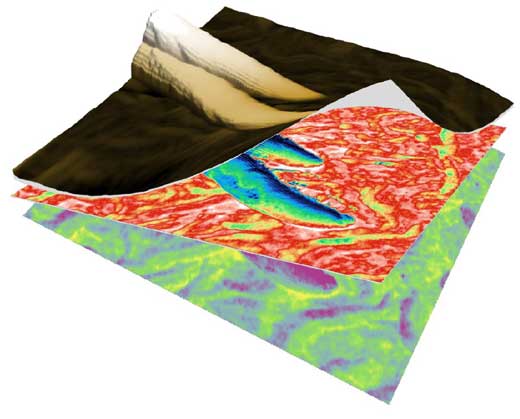| Posted: Dec 29, 2016 |
Distinguishing truth under the surface: electrostatic or mechanic
(Nanowerk News) Through a novel approach, we provide a method to decouple one of the major problems into KPFM/EFM advanced modes, the mechanical crosstalk.
|
|
The idea is simple, we will use KPFM/EFM to acquire an image with the electrical information plus the mechanical crosstalk.
|
|
Afterwards, a standard Bimodal AFM image is used to acquire the mechanical properties of the sample. Both images are then compared to see if electrostatic data can be used to interpret different electrostatic properties of the sample.
|
|
In order to compare both images, the exact same tip and parameters have to be employed.
|
 |
| Topography overlaid over the EFM Amplitude image (red) and bimodal AFM Amplitude (green). Under the topography image, it is possible to obtained different kind of information, however knowing the exact type of information is crucial to use KPFM technique in a reliable manner. (Image: ICMAB)
|
|
For instance, the following list of parameters has to be same for both modes: Amplitude of eigenmode 1, Amplitude of eigenmode 2, topography setpoint, scan speed and PID feedback for topography. With such parameters being the same, one can compare the Bimodal and KPFM/EFM information to realize if true electrostatic signal is obtained.
|
|
In our manuscript "Distinguishing between Mechanical and Electrostatic Interaction in Single Pass Multi Frequency Electrostatic Force Microscopy Measurements on a Molecular Material" published in the prestigious journal Langmuir, we provided the exact theoretical and experimental work that lead to the conclusion that mechanical crosstalk can really be decouple from electrostatic information.
|

